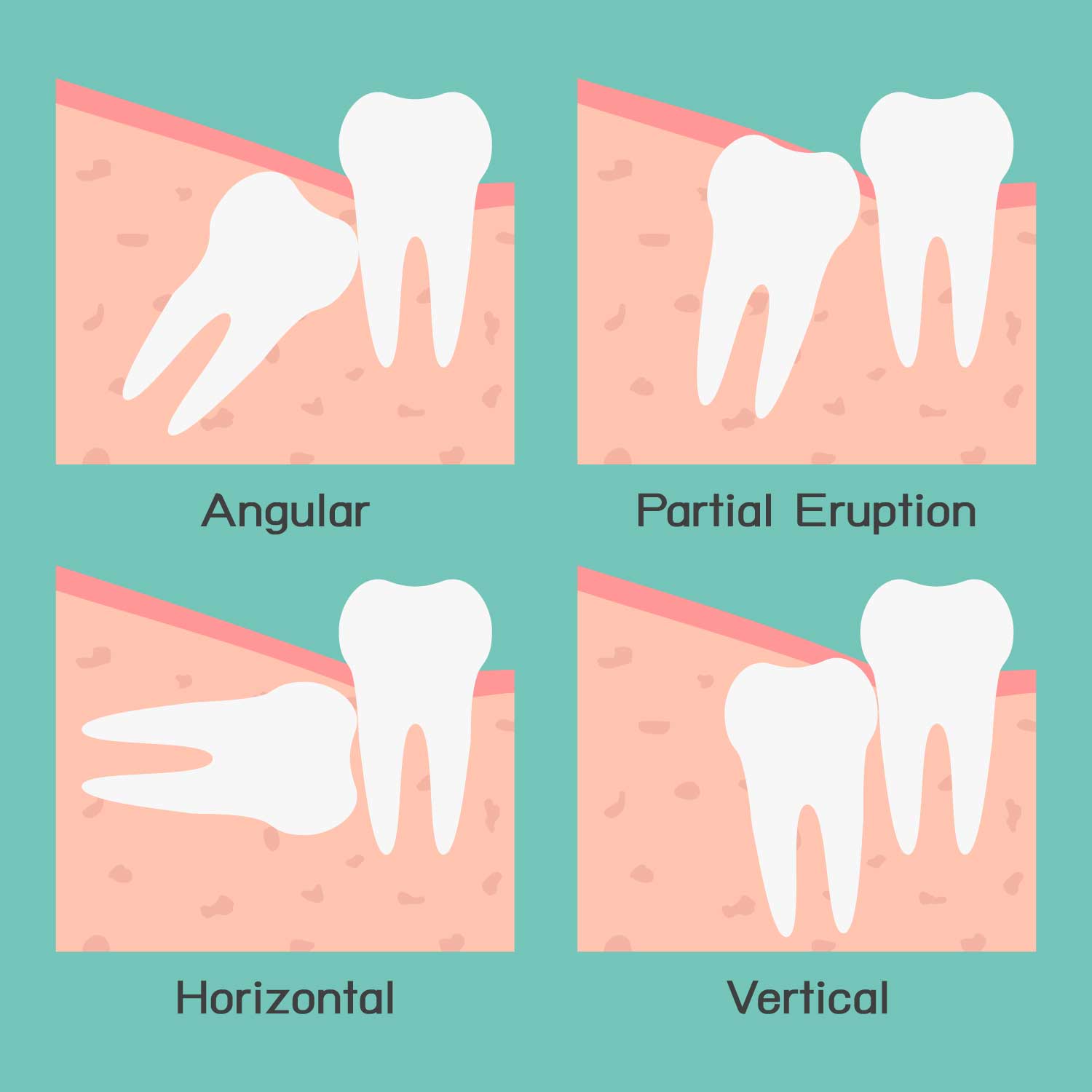Wisdom Teeth Extractions

There are usually three sets of permanent molars that develop in a person’s upper and lower jaw. The first molars usually grow into the mouth at around the age of 6. The second molars grow in usually around the age of 12. Third molars, also called wisdom teeth, are the last of a person’s teeth to surface, usually between ages 17-25. Most people get four wisdom teeth, but some don’t have any, and in some rare cases people end up with more than four. Your dentist will observe your wisdom teeth through x-rays as part of regular examinations.
In many cases, wisdom teeth do not grow in properly. There is also the potential of having unhealthy gum tissue around them. Often, wisdom teeth do not erupt properly or become impacted, requiring them to be extracted. The Canadian Association of Oral & Maxillofacial Surgeons (CAOMS) states that 85% of people with wisdom teeth will eventually have to have them removed. Left untreated impacted teeth can cause a host of problems, including misalignment of the jaw.
Even if not impacted, wisdom teeth can be difficult to clean and often require removal to reduce the risk of decay and infection. To avoid potential problems later in life, most dentists remove impacted wisdom teeth.
Your dentist will examine your mouth and x-rays to determine if your wisdom teeth are impacted or will not grow in properly. Impacted teeth may cause problems that can lead to infection, adjacent tooth resorption, gum disease, cysts, or tumors.
Symptoms of impacted teeth:
- Pain and stiffness of the jaw
- Infection in the mouth
- Headaches
- Facial swelling
- Swelling of the gum line in the back of the mouth
